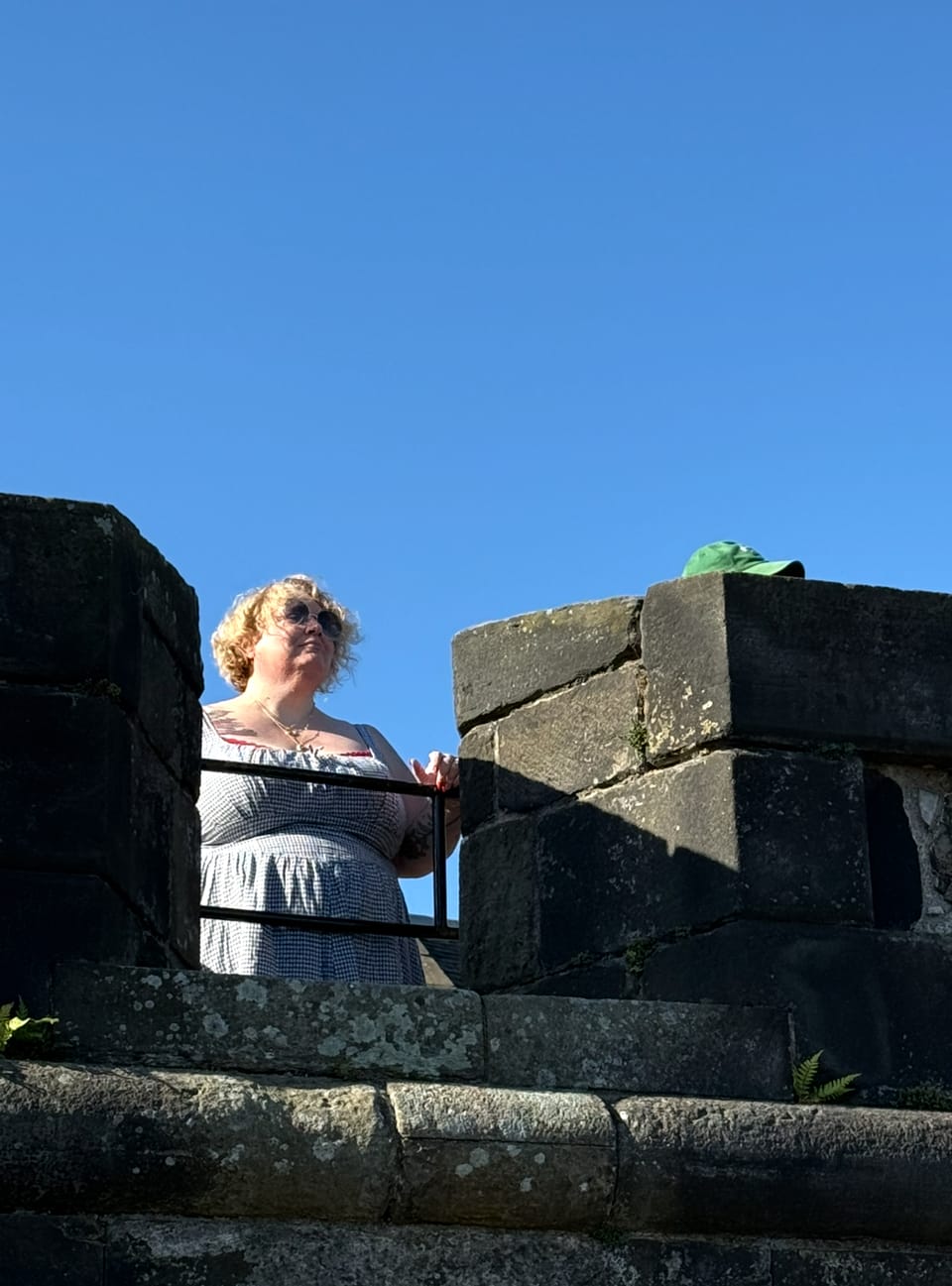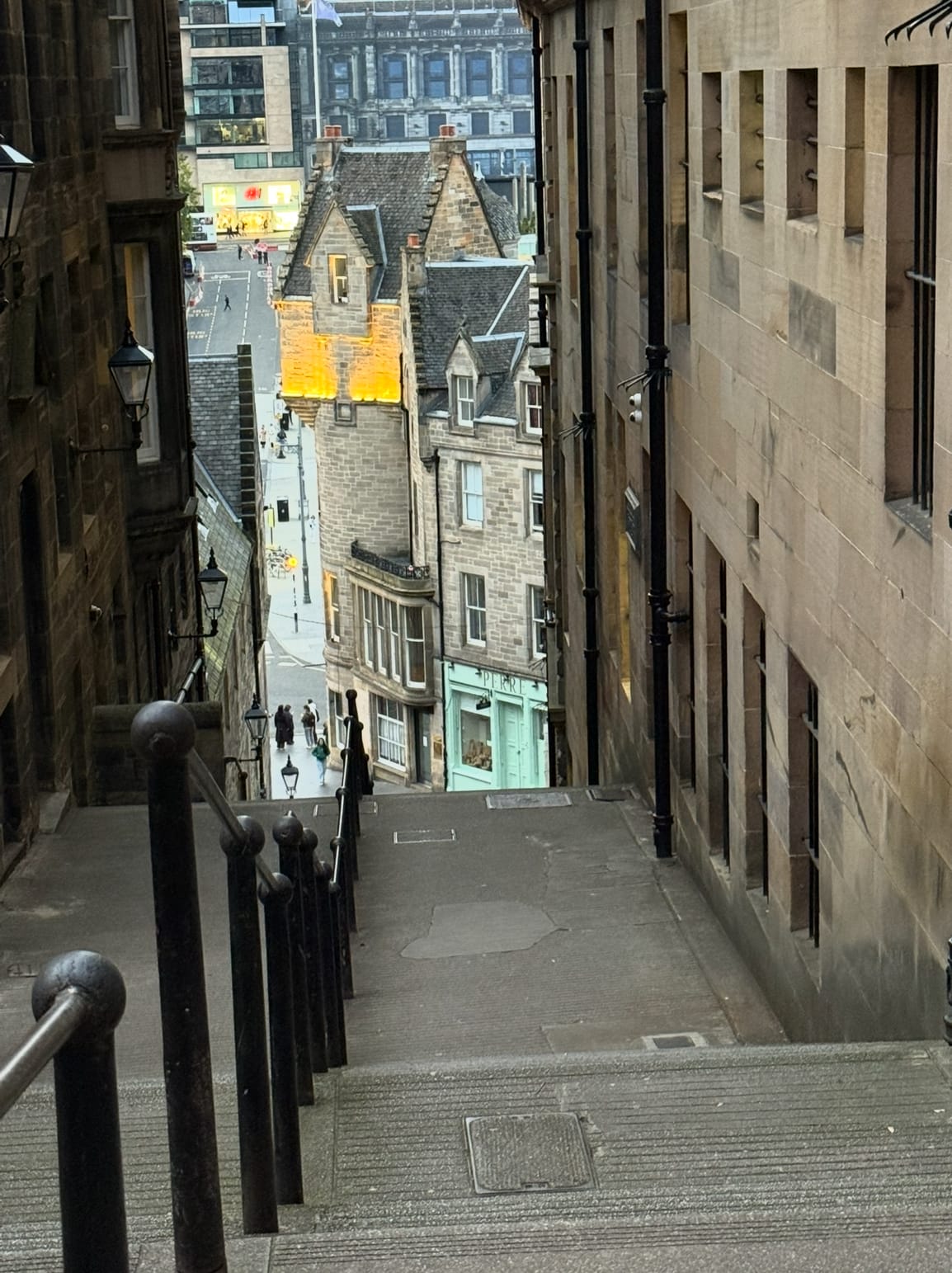14,000 Steps and Hurty Knees

Hi everyone! Happy Saturday. Hello again from London, where I’m about to watch two back-to-back games of brilliant women’s rugby. You should get up and join us! Sleep is for the weak.
I’m on the downhill slide of what I’ve been calling my grand tour (solo newsletter from Carl on creatine next week- I’ll be devouring my bodyweight in cheese and pastry in Paris).
When I decided not to lift on this trip, I figured I’d get enough activity just walking, lugging my 20kg suitcase up and down stairs, clambering up hills to see castles. Turns out there’s nothing like moving your body in unfamiliar ways to humble you.
At home, I average 6–7,000 steps a day. Not heaps, but reasonable given I also lift four times a week. My September average? 14,000. I’ve had days over 25,000. And not on nice flat pavements either - cobblestones, staircases, uneven wooden floors.

My knees, it turns out, are not as strong as I thought. Right now I’m sitting in bed, one hamstring sulking at me. I’m very glad of my sensible shoes and of Belgian weather being too cold for sandals anyway. Even my Oura ring has started whispering, “Hey, maybe a rest day would be cool?” And Paris is still to come.
The old, pre-gym Megan would have seen this as proof I was lazy and useless, that I should just lie down forever and avoid effort. The Megan who has been too scared to pee after heavy squats, in case I couldn’t stand up again, thinks differently: my muscles are adapting. This is good. How can I fold more of this into my life once I’m home ( and back to work and normal life, and how is one supposed to have time to do all this activity? Which is a whole other newsletter.)
Being sore isn’t failure, it’s information. It’s my body saying, “hey this is a whole lot of new stress, and I am still adapting.” When I had a couple of days where my knee was too sore to trust my weight on it, I rested. I stretched. I slowed down. And then, when it felt ready, I added load - in this case, more steps. The lessons I have taken from the gym aren’t only lessons for the gym.
The knee that’s grumbling is the same one I’ve noticed struggles in lunges, with less range of motion than the other. Now I have more data on what it doesn’t like — which means Carl and I (and probably my physio) can work on fixing it.
Turns out castles, cobblestones, and uneven staircases are pretty good diagnostic tools. And at least Paris has pastries for recovery.

Carl here - Firstly, this is amazing! I’ve always believed that the best way to experience a new location is on foot. You see, hear, smell and even feel things that you just wouldn't in any other mode of transport. You are more likely to pursue your curiosity and end up in a local restaurant having meaningful conversations with new people or some other situation in which you will remember for the rest of your life. For me, probably becoming obsessed over the detail on a leaf or seeing a tiny insect that I didn't even know existed. I feel like this alone is a reason to be fit and healthy, as who wants to limit these experiences? This is my core drive to stay fit, healthy and mobile, as I believe that it is true freedom.

I have two things that I'd like to explore from what Megan said above...
Part 1 - Step count:
You may be wondering why it is important to walk and what the ideal step count is?
Walking (therefore step count) is a great, simple, low-barrier form of physical activity, and a surprisingly powerful marker of overall health. Some of the key mechanisms and evidence suggests that it is cardio-protective, is good for body composition, improves vascular health and even has positive impacts on mental health!
Several large cohort or meta-analysis studies suggest that there is a dose-response relationship. One large meta analysis study shows that higher step counts are correlated with lower risk of death, cardiovascular events, and chronic disease incidence.
Another meta-analysis of 15 studies (47,000+ adults) found that risk of all-cause mortality declines as step count increases, up to a plateau point.
A recent Lancet Public Health based study found that about 7,000 steps/day was associated with marked reductions in risk of death and chronic conditions (versus very low step counts).
In a big data + electronic health record study, step count was inversely associated with incident hypertension, diabetes, obesity, GERD, depression, and sleep apnea, even after adjusting for intensity.
There are diminishing returns as the protective slope becomes shallower at high step volumes: gains continue, but the marginal benefit per additional 1,000 steps is smaller once you reach a “good” baseline.
So raising step count, even modestly, moves many people from “too little” toward “health-protective” territory.

So what are the research-supported recommendations based on my age, sex and level of fitness?
Are there any differences in sex? Its not super clear…
There is less data about men than women regarding how a daily step count affects health and longevity. However, the general guidelines for recommended steps per day for adults will apply to all sexes.
One study broke out some information about steps by sex. This large analysis examined 837 articles about step data in adults between the ages of 20 and 65. It showed that men who took 12,500 steps per day had a 50% reduced prevalence of depression compared to men who took fewer than 5,000 steps per day.
For adult females between 18 and 59 years, a meta-analysis of 15 studies showed that walking between 6,000 and 8,000 steps a day has the greatest effect on lowering the risk of disease and reducing the risk of death. Walking more than this is also fine, but the study didn’t show that it lowered risks further.
Considerations:
Intensity & cadence matter: Steps taken briskly (higher cadence) deliver more cardiovascular stimulus than slow ambulation. Some studies adjust for “intensity” in addition to volume.
Nonlinear associations: Benefits accumulate faster at low step levels; the biggest “bang for buck” is moving from very low to moderate step totals.
Non-walking activity counts: Step counters don’t capture swimming, cycling, weight training, etc. So someone might meet “activity guidelines” even with lower step counts.
Accuracy of smart devices: Smart devices are not 100% reliable and have been shown to overestimate steps slightly and not account for people with gait issues. However, these imperfections should even out when averaged over days.
In summary, if you are starting out, start slow and you will get benefits that will peak at around 8-10,000 steps and beyond that you will continue t get results but they will diminish. If you overdo it, or increase the volume too fast, you could end up with hurty bits like Megan...
Part 2: Why are Megan's legs hurting?
In short: Megan’s legs are talking to her because she’s dramatically increased her load, in new and unfamiliar ways, without the same recovery structures she has at home.
- Progressive overload (done accidentally). At home, Megan averages ~6–7,000 steps per day, supported by regular strength training. On her trip, she has doubled, and sometimes quadrupled her daily step volume (14,000–25,000 steps), layered on top of hauling luggage, climbing steep hills, and navigating cobblestones. That’s a massive increase in volume and novelty of movement, which the body interprets as overload. Normally, progressive overload is applied gradually so the tissues adapt. Here, the jump was sudden. The soreness and fatigue are the body’s way of saying: “We’re adapting, but this is new and how about some rest too.”
- Novel stressors. Movement on uneven surfaces (cobblestones, stairs, hills) challenges the stabilising muscles of the hips, knees, and ankles in ways flat-ground walking or lifting doesn’t. These smaller stabilisers aren’t trained as consistently, so they fatigue faster and get sore sooner. Her knees and hamstrings are also absorbing repetitive eccentric loading (braking on downhills, lowering suitcases), which is notorious for creating delayed onset muscle soreness (DOMS).
- Recovery debt. Normally, she’d balance heavy training with structured rest, mobility work, and proper fuelling. Travel often disrupts sleep, hydration, and nutrition, all of which slow recovery. Even with “sensible shoes,” her tissues are dealing with more strain while getting less of the usual support. Her Oura ring calling for rest is essentially flagging that her nervous system and muscles need downtime to catch up with the load.
- Underlying weak links made visible. Megan noticed the grumbling knee is the same one that struggles with lunges. That’s a great example of how new environments can highlight imbalances or limitations. A trip becomes a kind of “field test” diagnostic information she (and myself + physio) can use to strengthen what’s lagging once she’s home.
In summary, her legs aren’t failing her, they’re talking to her. Saying, 'hey, this is too much, too fast, and I will adapt, with some rest and recovery!'
